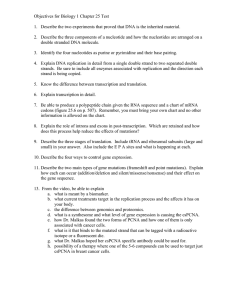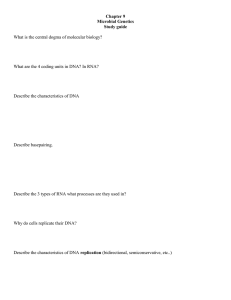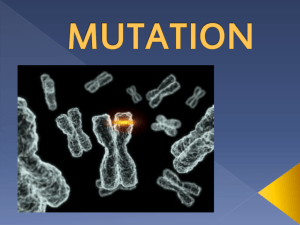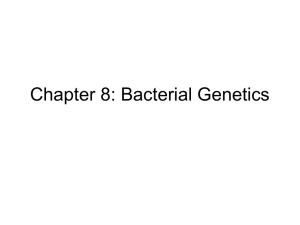Genetics (Chapters 7-8) Study questions
advertisement
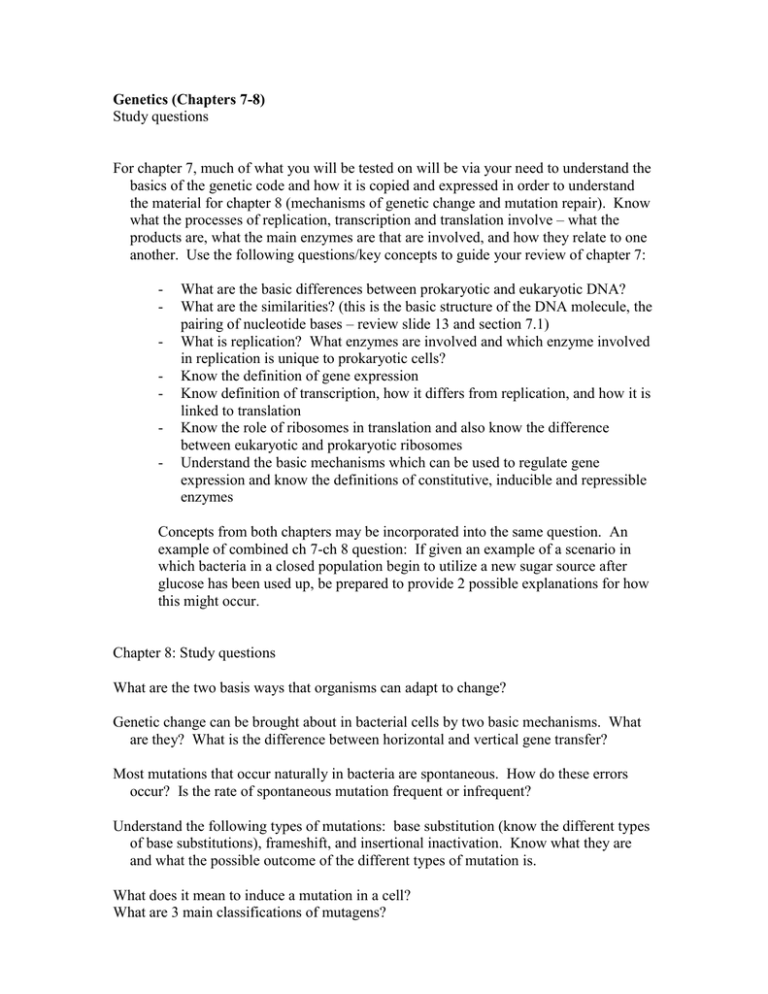
Genetics (Chapters 7-8) Study questions For chapter 7, much of what you will be tested on will be via your need to understand the basics of the genetic code and how it is copied and expressed in order to understand the material for chapter 8 (mechanisms of genetic change and mutation repair). Know what the processes of replication, transcription and translation involve – what the products are, what the main enzymes are that are involved, and how they relate to one another. Use the following questions/key concepts to guide your review of chapter 7: - What are the basic differences between prokaryotic and eukaryotic DNA? What are the similarities? (this is the basic structure of the DNA molecule, the pairing of nucleotide bases – review slide 13 and section 7.1) What is replication? What enzymes are involved and which enzyme involved in replication is unique to prokaryotic cells? Know the definition of gene expression Know definition of transcription, how it differs from replication, and how it is linked to translation Know the role of ribosomes in translation and also know the difference between eukaryotic and prokaryotic ribosomes Understand the basic mechanisms which can be used to regulate gene expression and know the definitions of constitutive, inducible and repressible enzymes Concepts from both chapters may be incorporated into the same question. An example of combined ch 7-ch 8 question: If given an example of a scenario in which bacteria in a closed population begin to utilize a new sugar source after glucose has been used up, be prepared to provide 2 possible explanations for how this might occur. Chapter 8: Study questions What are the two basis ways that organisms can adapt to change? Genetic change can be brought about in bacterial cells by two basic mechanisms. What are they? What is the difference between horizontal and vertical gene transfer? Most mutations that occur naturally in bacteria are spontaneous. How do these errors occur? Is the rate of spontaneous mutation frequent or infrequent? Understand the following types of mutations: base substitution (know the different types of base substitutions), frameshift, and insertional inactivation. Know what they are and what the possible outcome of the different types of mutation is. What does it mean to induce a mutation in a cell? What are 3 main classifications of mutagens? Which type of mutagen is UV light? How does it cause mutations? Are all bacteria equally susceptible to mutations induced by UV light? What type of damage is caused by reactive oxygen species? What are 2 examples of reactive oxygen species? Are all bacteria equally susceptible to mutations induced by oxidative damage? Know these mechanisms of DNA repair: mismatch repair, photoreactivation, excision repair and SOS repair How does the DNA polymerase know which base to replace when doing a mismatch repair?
